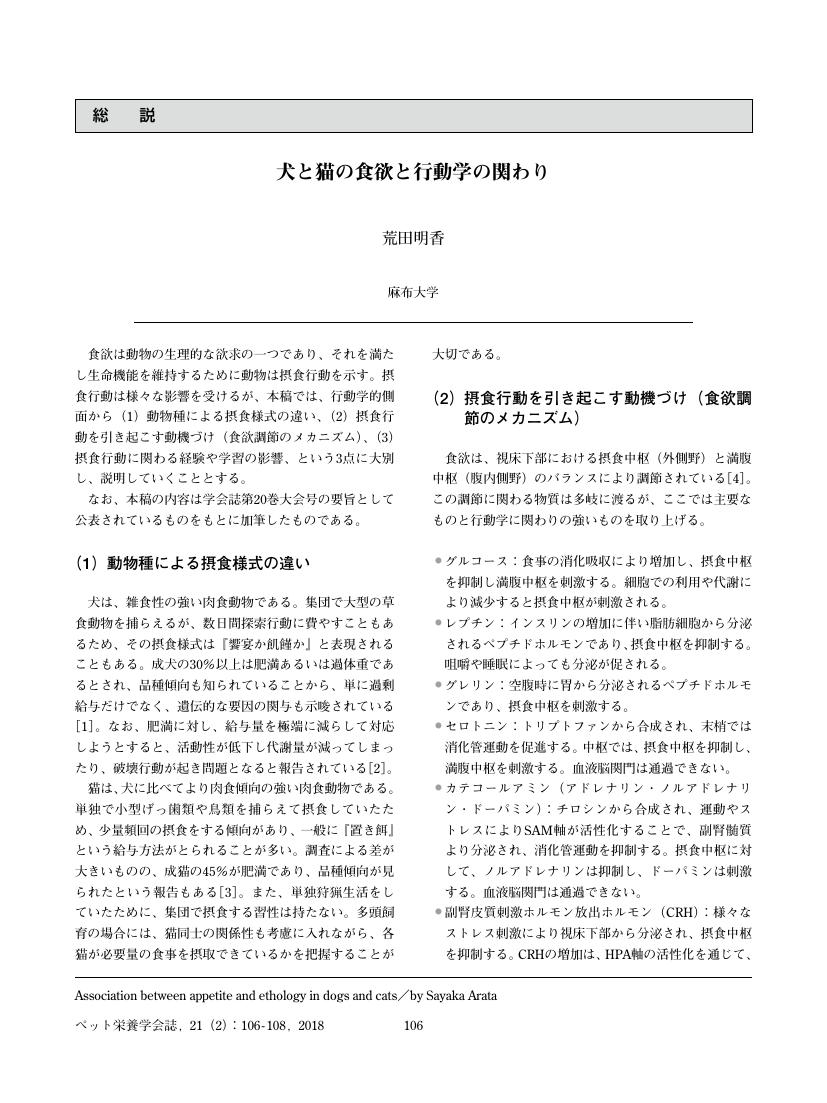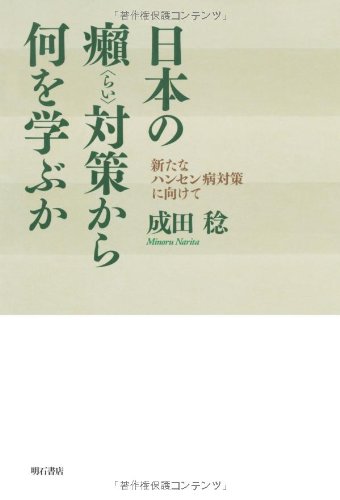1 0 0 0 IR 国民経済計算の批判的考察--「国内総生産」は経済活動の規模を表わすか
- 著者
- 河宮 信郎 青木 秀和 Nobuo Kawamiya Hidekazu Aoki
- 出版者
- 中京大学教養部
- 雑誌
- 中京大学教養論叢 (ISSN:02867982)
- 巻号頁・発行日
- vol.37, no.3, pp.560-535, 1997-01
- 被引用文献数
- 1
1 0 0 0 IR 日本土建国家論--政・建複合体制と財政破綻
- 著者
- 河宮 信郎 青木 秀和 Nobuo Kawamiya Hidekazu Aoki
- 出版者
- 中京大学教養部
- 雑誌
- 中京大学教養論叢 (ISSN:02867982)
- 巻号頁・発行日
- vol.35, no.1, pp.p412-353, 1994
- 著者
- 村松 武
- 出版者
- 飯田市美術博物館
- 雑誌
- 飯田市美術博物館 研究紀要 (ISSN:13412086)
- 巻号頁・発行日
- vol.7, pp.137-144, 1997
1 0 0 0 OA 音響標準について
- 著者
- 新木 諒三 吉川 昭吉郎
- 出版者
- 公益社団法人 計測自動制御学会
- 雑誌
- 計測と制御 (ISSN:04534662)
- 巻号頁・発行日
- vol.6, no.8, pp.580-589, 1967-08-10 (Released:2009-11-26)
- 参考文献数
- 19
1 0 0 0 OA 犬と猫の食欲と行動学の関わり
- 著者
- 荒田 明香
- 出版者
- 日本ペット栄養学会
- 雑誌
- ペット栄養学会誌 (ISSN:13443763)
- 巻号頁・発行日
- vol.21, no.2, pp.106-108, 2018-07-10 (Released:2018-08-10)
- 参考文献数
- 9
1 0 0 0 OA カルベジロールの光学異性体別の体内動態研究
- 著者
- 小林 貴志 福本 恭子 土下 喜正 楠本 正明 上野 和行
- 出版者
- 一般社団法人日本医療薬学会
- 雑誌
- 医療薬学 (ISSN:1346342X)
- 巻号頁・発行日
- vol.32, no.8, pp.772-775, 2006-08-10 (Released:2007-11-09)
- 参考文献数
- 11
It has been reported that the pharmacokinetics and pharmacodynamics of carvedilol vary between the S- and R- enantiomers. The aim of this study was to evaluate the pharmacokinetic characteristics of carvedilol for each enantiomer and apply this in clinical practice. Serum stereoselective concentrations of carvedilol were monitored in 60 Japanese inpatients who received a fixed dose of carvedilol. The concentrations were determined by high performance liquid chromatography (HPLC). Serum carvedilol concentration/dose of administered carvedilol ratios were determined for each enantiomer (R/D, S/D). The means±SD for R/D and S/D were 85.8±264.0 (10-3kg/L) and 29.0±78.2 (10-3kg/L), respectively. The mean for R/D tended to be larger than that for S/D (p=0.11), and the dispersion of R/D was significantly greater than that of S/D (p<0.01). Although a significant positive correlation was observed between R/D and S/D, a remarkable difference was observed in a few inpatients. These results suggest that the pharmacokinetics of carvedilol are different for each enantiomer. The monitoring of the stereoselective pharmacokinetics of carvedilol is therefore necessary to ensure proper use.
1 0 0 0 規範主義と記述主義 (特集 辞書をめぐる7つの闘い)
- 著者
- 国広 哲弥
- 出版者
- 大修館書店
- 雑誌
- 言語 (ISSN:02871696)
- 巻号頁・発行日
- vol.29, no.5, pp.24-31, 2000-05
1 0 0 0 OA アーミッシュを訪ねて 6(最終回) : 現代アメリカ社会とアーミッシュ
- 著者
- 鈴木 七美 Nanami Suzuki
- 出版者
- 大修館書店
- 雑誌
- 月刊言語 (ISSN:02871696)
- 巻号頁・発行日
- vol.32, no.9, pp.16-21, 2003-09-01
1 0 0 0 OA 上下揺と旋回の受動的身体揺動による疑似歩行感覚の生成
- 著者
- 雨宮 智浩 北崎 充晃 池井 寧
- 出版者
- 特定非営利活動法人 日本バーチャルリアリティ学会
- 雑誌
- 日本バーチャルリアリティ学会論文誌 (ISSN:1344011X)
- 巻号頁・発行日
- vol.24, no.4, pp.371-376, 2019 (Released:2019-12-31)
- 参考文献数
- 21
This paper examined the influence of passive whole-body motions such as heave or yaw motions by a motorized chair on inducing a sensation of walking for seated participants in virtual environments while viewing a VR scene through an HMD. We conducted a pilot study to evaluate the influence of passive whole-body motions on perception as if the participant were walking. Experimental results show that the perception of pseudo-walking was greatly affected by heave motions rather than yaw motions, but just with a limited range of amplitude of heave motions. Our results suggest that the passive whole-body motions in the gravitational axis allow a clear perception of pseudo-walking. In addition, we found a strong correlation between the scores of a walking sensation and a motion sickness.
1 0 0 0 実時間画像処理によるエレベータ乗場の人数計測と車椅子の識別
- 著者
- 内舘 光 猪田 良介 辻 俊明 阿部 茂
- 出版者
- 一般社団法人 電気学会
- 雑誌
- 電気学会論文誌D(産業応用部門誌) (ISSN:09136339)
- 巻号頁・発行日
- vol.129, no.6, pp.578-584, 2009-06-01 (Released:2009-06-01)
- 参考文献数
- 18
- 被引用文献数
- 2 5
This paper proposes a real-time image processing system for wheelchair recognition at elevator lobby. This system extracts objects with frame difference method. From the image of extracted objects, heads of people are detected by the Hough transform. Vertical shooting from ceiling improves the performance of people counting since the detected head has high roundness and occlusion of people is prevented. Two feature quantities are introduced to recognize wheelchairs. They are the area value and the ratio of traveling length to vertical length. Since these quantities require a method for drawing the contour line. This paper proposes a new simple method to draw a contour line. The effectiveness of this system is confirmed through experiments.
1 0 0 0 IR 最近年のわが国における国債累積と財政運営の諸問題
- 著者
- 安居 洋
- 出版者
- 大阪府立大学経済学部
- 雑誌
- 経済研究 (ISSN:04516184)
- 巻号頁・発行日
- vol.40, no.2, pp.p1-26, 1995-03
1 0 0 0 IR 為替に対する二つの牽引
- 著者
- 藤川 昌弘
- 出版者
- 法政大学経済学部学会
- 雑誌
- 経済志林 (ISSN:00229741)
- 巻号頁・発行日
- vol.66, no.3, pp.183-222, 1999-03
1 0 0 0 國立療養所史
- 著者
- 厚生省医務局療養所課内国立療養所史研究会編
- 出版者
- 厚生省医務局
- 巻号頁・発行日
- 1975
- 著者
- 星塚敬愛園入園者自治会著
- 出版者
- 星塚敬愛園入園者自治会
- 巻号頁・発行日
- 1985
- 著者
- 長島 修
- 出版者
- 社会経済史学会
- 雑誌
- 社会経済史学 (ISSN:00380113)
- 巻号頁・発行日
- vol.76, no.4, pp.615-616, 2011
1 0 0 0 OA 有機溶剤ガス人体暴露実験室
- 著者
- 鈴木 秀吉
- 出版者
- 社団法人 日本産業衛生学会
- 雑誌
- 産業医学 (ISSN:00471879)
- 巻号頁・発行日
- vol.10, no.8, pp.421-425, 1968-08-20 (Released:2008-04-14)
- 参考文献数
- 3
As the determination of the maximum allowable concentration of organic solvents requires investigations of the physical responses of man to specified gas concentrations, a gas chamber for that purpose was constructed. The chamber is 2.23 m wide, 3.55 m long, and 2.80 m high, the cubic space being about 23 m3, and it is large enough for two or three men to work to a certain extent at a time. All the walls are shielded with wire netting for undisturbed electrophysiological experiments. The inside of the chamber is furnished like an ordinary living room lest the subject should be strained unnecessarily. Gas generators, concentration measuring apparatus, and electro-physiological apparatus are all equipped outside so that the experimenter may easily operate them observing the inside through the window. To produce a constant gas concentration a method is adopted in which a constant fresh air flow is kept through the air duct in which the solvent vapour is being shot with a spray gun; the quantity of the vapour is adjustable with a screw. An experiment on the function of the chamber under conditions, that tow men were working moderately within and 3.5 m3/min acetone gas was kept sending in, obtained a satisfactory result in which no liability of CO2 accumulation was noticed and the concentration of the solvent kept its stability throughout 6 hours' operation after the first 40 minutes of variation. The range of the concentration to be adjusted with comparative ease was 100∼2000 p.p.m. Though the result of the experiment was pretty satisfactory, the points required for further improvement are: 1) that the noises caused by a fan and by the spray- gun be abated, 2) that a climate adjuster be installed, 3) that the adjustment for concentrations lower than 100 p.p.m.or higher than 2000 p.p.m. be further contrived, 4) that an anemometer for gauging the quantity of the air flow be equipped, and 5) that a gas-chromatograph for the measurement of solvent concetrations be equipped.
1 0 0 0 OA カール・ディームの「スポーツ教育」論にみる「身体」と「権力」
- 著者
- 釜崎 太
- 出版者
- 弘前大学教育学部
- 雑誌
- 弘前大学教育学部紀要 (ISSN:04391713)
- 巻号頁・発行日
- no.99, pp.87-105, 2008-03-25


